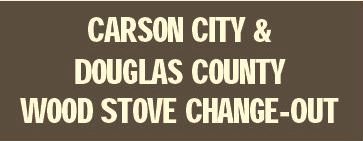Wood Stoves
The Wood Stove Change-Out Campaign will provide area residents with incentives to replace their old, dirty-burning wood stoves that emit excessive smoke with today’s cleaner-burning, more efficient hearth heating appliances. The wood stove change-out concept was created by the U.S. Environmental Protection Agency (EPA) and the Hearth, Patio & Barbecue Association, and has been successfully employed in many other areas of the country.
When you burn, Do You:
• Smell smoke in the house?
• Notice smoke coming from the chimney?
• See more dust around the house?
• Experience watery eyes and stuffy noses?
• Have to constantly feed the stove with wood?
If you answered Yes to any of these questions, consider replacing your old wood stove.
Old wood stoves can create up to 15 times more pollution than new EPA certified stoves.
Cons |
Pros |
Old Wood Stoves Disadvantages:
|
Certified Wood Stoves Advantages:
|
Certified Pellet Stoves Disadvantages:
|
Certified Pellet Stoves Advantages:
|
Gas Stove Disadvantages:
|
Gas Stoves Advantages:
|
What Size Wood Stove?
Making a decision about what size wood stove you need can be as simple or as complex as you’d like to make it. The main factors that should be considered are (1) space, (2) heat loss, and (3) fuel. In other words, how large an area are you trying to heat, how well insulated is your home, how cold is your climate, and what is the quality of your wood supply? The final factor, though more difficult to define, is your expectation of the stove’s performance. READ MORE HERE
Benefits of cleaner-burning appliances
- Healthier: Decrease pollution and improve air quality
- Safer: Decrease chimney buildup and reduce the risk of a home fire
- More efficient: Use less wood and save money
 Information about Modern Stoves Information about Modern Stoves |
 Burn Wise Information Burn Wise Information |
EPA Burn Wise: Burn Wise is an educational campaign that encourages people to burn only dry, seasoned wood or wood pellets and includes messages about cost savings, improved safety and health benefits. Because being more energy efficient means burning less wood, reducing smoke and polluting less.
Earn financial incentives when you switch to cleaner, more efficient wood burning stoves.
Learn more about incentives where you live by clicking on the link below:
- Carson City and Douglas County Wood Stove Change-out Rebate Program
- Washoe County Wood Stove Change-out Rebate Program
- Lake Tahoe Regional Wood Stove Change-Out Rebate program (TRPA)
 |
 |
